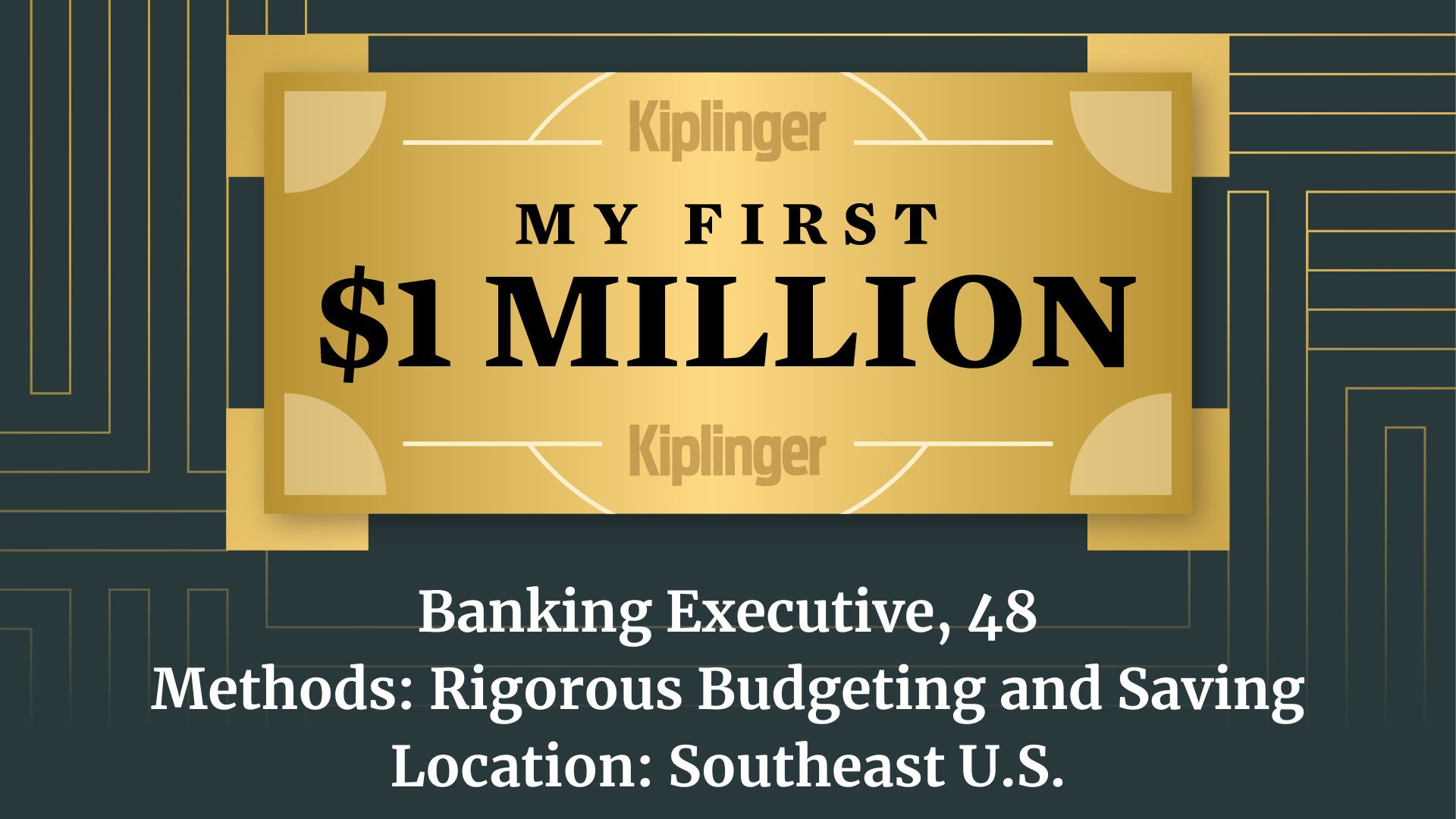Gaining More Certainty in Your Retirement Income Plan
Relying on market performance to close the gap in your retirement income could let you down, but a CD ladder and fixed annuities could provide some certainty.


Adjusting to life without a traditional paycheck and planning for retirement income can be one of the most intimidating aspects of transitioning from working to retirement.
After decades of receiving reliable income from an employer, retirees suddenly must create their own “paycheck” to fund their lifestyles using their Social Security benefits, a pension (if they have one) and the savings they’ve managed to pull together through the years.
The income planning process may often start with complicated questions like:
From just $107.88 $24.99 for Kiplinger Personal Finance
Become a smarter, better informed investor. Subscribe from just $107.88 $24.99, plus get up to 4 Special Issues

Sign up for Kiplinger’s Free Newsletters
Profit and prosper with the best of expert advice on investing, taxes, retirement, personal finance and more - straight to your e-mail.
Profit and prosper with the best of expert advice - straight to your e-mail.
- Should you file for your Social Security benefits at 62, delay until you’re 70 to get more money or choose something in between?
- If you have a pension, should you take a lump-sum payout — if it’s available — or go with the lifetime annuity option?
- If you’re married, how can you avoid putting a financial strain on the surviving spouse when one of you passes away?
But that’s just the start. If your Social Security benefits and pension won’t cover all your costs, you’ll have to find a way to cover that gap. And for many retirees, that could mean over-relying on investments that are inherently unpredictable.
Traditional Way of Creating Retirement Income Could Be Risky
Creating dependable cash flow from your retirement portfolio can be a daunting assignment. And doing it the old-fashioned way — with a withdrawal plan that assumes the markets will consistently provide what you need — could put your retirement at risk. A withdrawal strategy based on market performance is not necessarily an income plan.
Yes, the markets always recover from those nasty downturns … eventually. And so can the securities in your portfolio … with time. But what happens if, in the meantime, you’re depending on your investments to help pay your bills?
It’s important to keep a couple of things in mind as you plan your retirement income:
- It’s much harder to rebound from a rough patch when you’re taking money from your portfolio than when you’re putting money in. And if a downturn or bear market occurs at the start of your retirement, it could have a significant effect on how much money you’ll be able to withdraw each year. If you stick with the withdrawal rate you originally planned, it’s unlikely your money will last as long as you need.
- Prior to retirement, it’s not a bad idea to focus on the “average rate of return” in your portfolio. (In fact, it could keep you from going a little nuts as the markets fluctuate.) But once you retire, it’s the “annual rate of return” that counts. It won’t matter much that your portfolio averaged 8% per year while you were working and saving, for example, if you lose 20% in your first year of retirement and you’re relying on your investments for income.
So, what are some ways that can help you create more certainty in your retirement income plan?
Even if you dial back your exposure to risk in retirement — by moving to a 60/40 stock-bond mix, for example, or even 50/50 — you could run into trouble. The stock market can be a good place to put your money when you’re looking for growth, and time is on your side. But in retirement, it’s wise to seek out strategies that will help guard the money you’ll need to live on.
CD Ladder Could Offer Safety and Flexibility
One way to potentially accomplish this is with a CD ladder, which can offer both safety and flexibility. Though you can’t expect crazy growth with certificates of deposit, like your parents and grandparents did in the 1980s, you won’t lose money. And because you’ll decide how long each CD’s term will last, you can be sure there will always be some money available when you need it.
Another possibility to consider is fixed annuities, which can be reasonably secure and can provide a monthly paycheck for life (similar to your Social Security benefits or an employer’s pension). Purchasing the right types of annuities for your needs can be more complicated than some other retirement strategies, so it’s a good idea to seek advice from an experienced financial adviser. But putting an appropriate portion of your money into annuities can be a useful way to shield yourself from the ugly downside of the markets.
Too Much in Cash Can Dampen Long-Term Performance
Though it might be tempting to keep a large stash of cash to tap for income when the market flounders, in most cases, I don’t recommend it. Keeping too much money in cash can be a drag on long-term performance, and it could result in you slowly going broke.
Keep in mind that your retirement income plan also should be structured in a way that helps minimize the bite inflation and taxes can take.
Did I mention that creating a retirement income plan can be daunting?
If you aren’t sure where to start — or if you’re worried you won’t have enough to get across the finish line — don’t hesitate to ask for assistance. Winging it is not the answer. A retirement professional can help you understand what you’ll need and how to build a paycheck you can rely on.
Kim Franke-Folstad contributed to this article.
The appearances in Kiplinger were obtained through a PR program. The columnist received assistance from a public relations firm in preparing this piece for submission to Kiplinger.com. Kiplinger was not compensated in any way.
Investment advisory products and services made available through AE Wealth Management, LLC (AEWM), a Registered Investment Advisor.
Insurance products are offered through the insurance business Hill Wealth Management dba: Freedom Financial Group. Hill Wealth Management dba: Freedom Financial Group is also an Investment Advisory practice that offers products and services through AE Wealth Management, LLC (AEWM), a Registered Investment Adviser. AEWM does not offer insurance products. The insurance products offered by Hill Wealth Management dba: Freedom Financial Group. are not subject to Investment Advisor requirements. Neither the firm nor its agents or representatives may give tax or legal advice. Individuals should consult with a qualified professional for guidance before making any purchasing decisions. Our firm is not affiliated with or endorsed by the U.S. Government or any governmental agency. Investing involves risk, including the potential loss of principle. 1549011 – 11/22
Profit and prosper with the best of Kiplinger's advice on investing, taxes, retirement, personal finance and much more. Delivered daily. Enter your email in the box and click Sign Me Up.

Cole Czajkoski is a retirement planner and Investment Adviser Representative with Freedom Financial Group. He graduated from Auburn University with a bachelor’s degree in marketing and holds a Series 65 securities license as well as life and health insurance licenses. Cole helps build retirement plans for new client families, and he assists with many of the behind-the-scenes functions at the firm.
-
 How to Safely Open an Online Savings Account
How to Safely Open an Online Savings AccountOnline banks offer generous APYs that most brick-and-mortar banks can't match. If you want to make the switch to online but have been hesitant, I'll show you how to do it safely.
-
 7 Ways to Age Gracefully Like the Best Stock Photo Seniors
7 Ways to Age Gracefully Like the Best Stock Photo SeniorsAs a retirement editor, I've gleaned valuable wisdom (and a lot of laughs) from one older couple that tops the seniors' stock photo charts.
-
 My First $1 Million: Banking Executive, 48, Southeast U.S.
My First $1 Million: Banking Executive, 48, Southeast U.S.Ever wonder how someone who's made a million dollars or more did it? Kiplinger's My First $1 Million series uncovers the answers.
-
 Time to Close the Books on 2025: Don't Start the New Year Without First Making These Money Moves
Time to Close the Books on 2025: Don't Start the New Year Without First Making These Money MovesAs 2025 draws to a close, take time to review your finances, maximize tax efficiency and align your goals for 2026 with the changing financial landscape.
-
 Is Fear Blocking Your Desire to Retire Abroad? What to Know to Turn Fear Into Freedom
Is Fear Blocking Your Desire to Retire Abroad? What to Know to Turn Fear Into FreedomCareful planning encompassing location, income, health care and visa paperwork can make it all manageable. A financial planner lays it all out.
-
 How to Master the Retirement Income Trinity: Cash Flow, Longevity Risk and Tax Efficiency
How to Master the Retirement Income Trinity: Cash Flow, Longevity Risk and Tax EfficiencyRetirement income planning is essential for your peace of mind — it can help you maintain your lifestyle and ease your worries that you'll run out of money.
-
 I'm an Insurance Expert: Sure, There's Always Tomorrow to Report Your Claim, But Procrastination Could Cost You
I'm an Insurance Expert: Sure, There's Always Tomorrow to Report Your Claim, But Procrastination Could Cost YouThe longer you wait to file an insurance claim, the bigger the problem could get — and the more leverage you're giving your insurer to deny it.
-
 Could a Cash Balance Plan Be Your Key to a Wealthy Retirement?
Could a Cash Balance Plan Be Your Key to a Wealthy Retirement?Cash balance plans have plenty of benefits for small-business owners. For starters, they can supercharge retirement savings and slash taxes. Should you opt in?
-
 7 Retirement Planning Trends in 2025: What They Mean for Your Wealth in 2026
7 Retirement Planning Trends in 2025: What They Mean for Your Wealth in 2026From government shutdowns to market swings, the past 12 months have been nothing if not eventful. The key trends can help you improve your own financial plan.
-
 What Defines Wealth: Soul or Silver? Good King Wenceslas' Enduring Legacy in the Snow
What Defines Wealth: Soul or Silver? Good King Wenceslas' Enduring Legacy in the SnowThe tale of Good King Wenceslas shows that true wealth is built through generosity, relationships and the courage to act kindly no matter what.
-
 An Investing Pro's 5 Moves to Help Ensure 2025's Banner Year in the Markets Continues to Work Hard for You in 2026
An Investing Pro's 5 Moves to Help Ensure 2025's Banner Year in the Markets Continues to Work Hard for You in 2026After a strong 2025 in the stock market, be strategic by rebalancing, re-investing with a clear purpose and keeping a disciplined focus on your long-term goals.